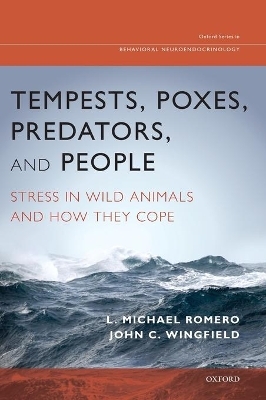
Tempests, Poxes, Predators, and People
Oxford University Press Inc (Verlag)
978-0-19-536669-3 (ISBN)
Although scientists have discovered many fundamental physiological and behavioral mechanisms that comprise the stress response, most of current knowledge is based on laboratory experiments using domesticated or captive animals. Scientists are only beginning, however, to understand how stress impacts wild animals - by studying the nature of the stressful stimuli that animals in their natural environments have adapted to for survival, and what the mechanisms that allow that survival might be. This book summarizes, for the first time, several decades of work on understanding stress in natural contexts. The aim is two-fold. The first goal of this work is to place modern stress research into an evolutionary context. The stress response clearly did not evolve to cause disease, so that studying how animals use the stress response to survive in the wild should provide insight into why mechanisms evolved the way that they did. The second goal is to provide predictions on how wild animals might cope with the Anthropocene, the current period of Earth's history characterized by the massive human remodeling of habitats on a global scale. Conservation of species will rely upon how wild animals use their stress response to successfully cope with human-created stressors.
L. Michael Romero is Professor of Biology at Tufts University. John C. Wingfield is Distinguished Professor of Neurobiology, Physiology, and Behavior and Endowed Chair in Physiology at the University of California, Davis. Professors Romero and Wingfield have spent their careers studying the endocrinology of wild animals in their natural habitats. A major focus has been on how animals cope with stressors in the environment. Between the two of them, they have studied over 100 different species covering all of the major vertebrate taxa (mammals, birds, fish, reptiles, and amphibians).
PART I. Biology of Stress
Chapter 1: Environment and the Earth: A Stressful Planet
Chapter 2: Mediators of Stress
Chapter 3: Models of Stress
Chapter 4: Classic Stress Response
Chapter 5: Impacts on Physiological and Behavioral Systems
PART II. Coping with a Capricious Environment
Chapter 6: Field Techniques
Chapter 7: Responses to Natural Perturbations: Variation in Available Energy
Chapter 8: Responses to Natural Perturbations: Tempests-Weather and Climate Events
Chapter 9: Responses to Natural Perturbations: Poxes, Predators, and Personalities
Chapter 10. Modulation of the Adrenocortical Response to Stress
Chapter 11: Development, Environmental, and Maternal Effects
Chapter 12: Global Change: Consequences of Human Disturbance
Chapter 13: Global Change: Conservation Implications and the Role of Stress Physiology
Chapter 14: Conclusions and the Future
Index
| Erscheinungsdatum | 30.11.2015 |
|---|---|
| Reihe/Serie | Oxford Series in Behavioral Neuroendocrinology |
| Zusatzinfo | b/w illus. |
| Verlagsort | New York |
| Sprache | englisch |
| Maße | 175 x 257 mm |
| Gewicht | 1247 g |
| Themenwelt | Geisteswissenschaften ► Psychologie ► Verhaltenstherapie |
| Medizin / Pharmazie ► Medizinische Fachgebiete ► Neurologie | |
| Studium ► 1. Studienabschnitt (Vorklinik) ► Physiologie | |
| Naturwissenschaften ► Biologie ► Humanbiologie | |
| Naturwissenschaften ► Biologie ► Ökologie / Naturschutz | |
| Naturwissenschaften ► Biologie ► Zoologie | |
| Veterinärmedizin | |
| ISBN-10 | 0-19-536669-7 / 0195366697 |
| ISBN-13 | 978-0-19-536669-3 / 9780195366693 |
| Zustand | Neuware |
| Haben Sie eine Frage zum Produkt? |
aus dem Bereich


